The Spectra-Physics Advantage 163-C4210 is our second air-cooled Argon Ion laser system that we have purchased. Manufactured in 1999, it is quite impressive that it still works perfectly. It fired up more readily and with less initial trouble than our newer Melles Griot IMA unit. It produces a beam of vibrant green light with a wavelength of 514nm and is not multi-line like the Melles Griot IMA unit. We tested with a diffraction grating, but only the single 514nm green beam was visible. Green appears to be a less common wavelength with Argon Ion lasers compared to the usual 488nm cyan. This was the only green Argon Ion laser system we were able to find listed for sale on eBay at time of writing.

The laser head is slightly larger than a typical rectangular tissue box, features a mechanical beam shutter, beam emission indicator lamp along with the usual proprietary, circular connector shared by many Argon Ion lasers. The connector appears to be same as the Melles Griot unit but has a different pin-out. The umbilical cable used to connect the laser head to the power supply is also extremely similar to the one that came with the Melles Griot system.


Here are some pictures of the inside of the Advantage 163C laser head. The top case slides up and off after loosening the four screws on each side and removing the two on top. The cooling fan uses a Molex connector and the emission indicator has two spade lug terminals with wiring that runs back to the main harness. The laser head is exceptionally well built and clearly laid out inside, as far as wiring goes. The tube itself is a Spectra-Physics model 0093-42, and is entirely encased in a metal jacket with essentially no visible glass components. The ceramic insulating ring does glow a dim blue color while the laser is running. The anode connection is near the front of the laser head and connects to a small circuit board located behind the front aperture. A black terminal block on the side of the laser head connects the internal electronic components and has some MOVs installed for protection. All components within the laser head along with the tube are mounted to a thick piece of aluminum for rigidity.

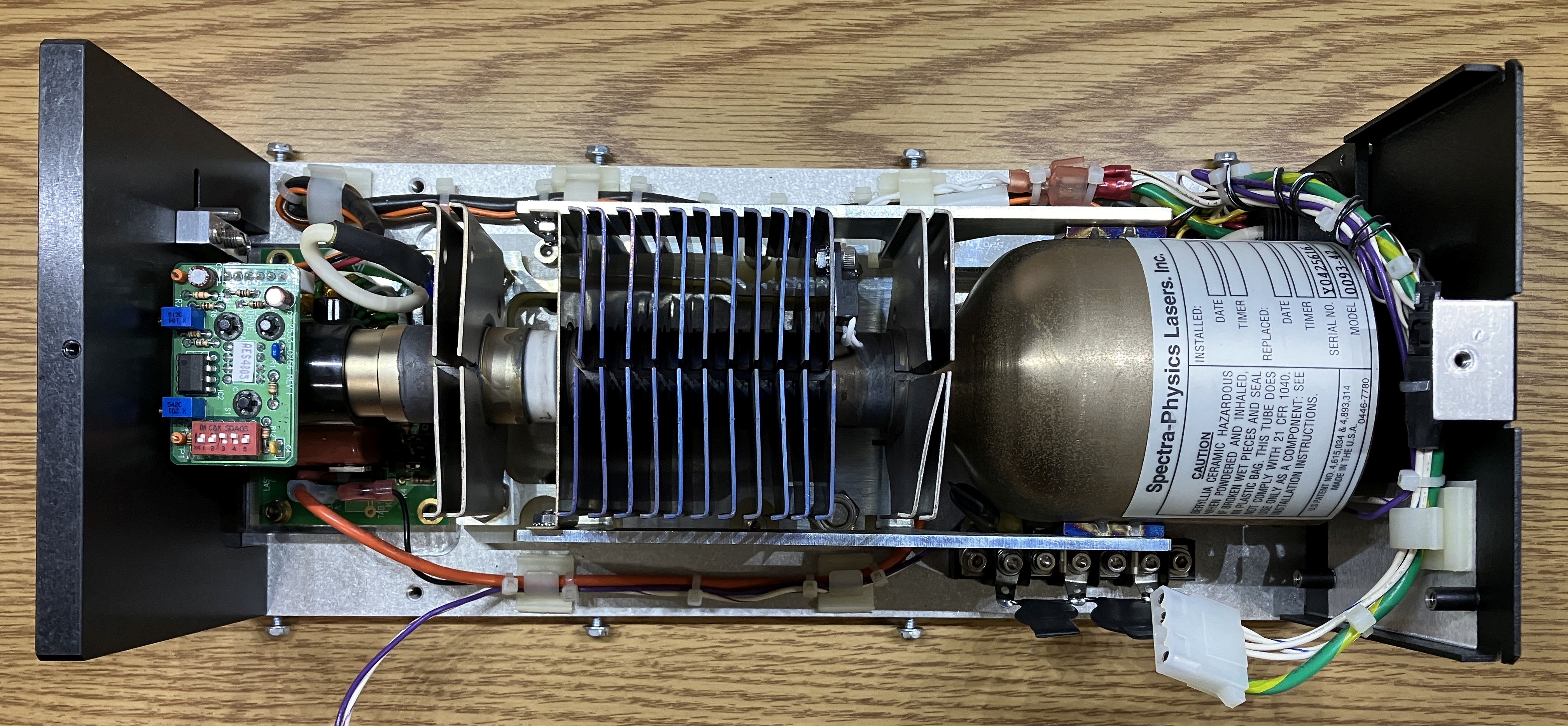
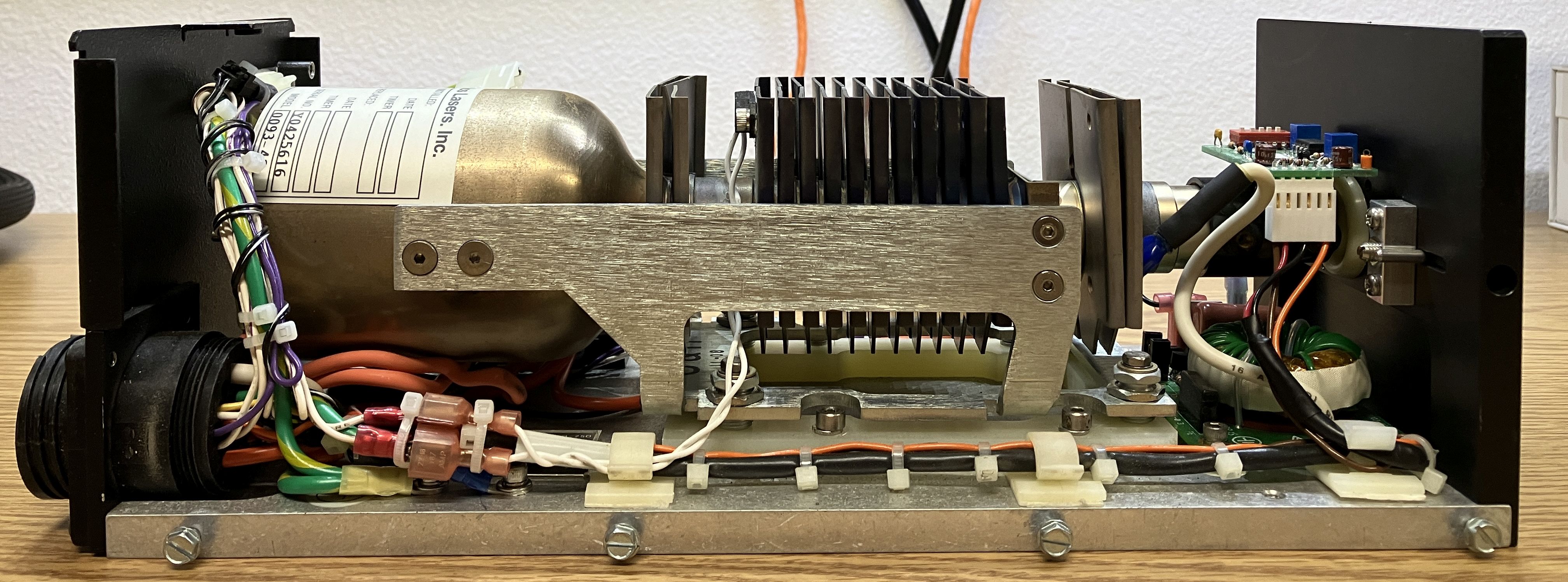
Mounted directly on top of the output aperture is a small board with connections to an internal photodiode, two potentiometers, a bank of DIP switches, and a bit of digital logic. Connections from this board route back to the power supply over the umbilical cable.
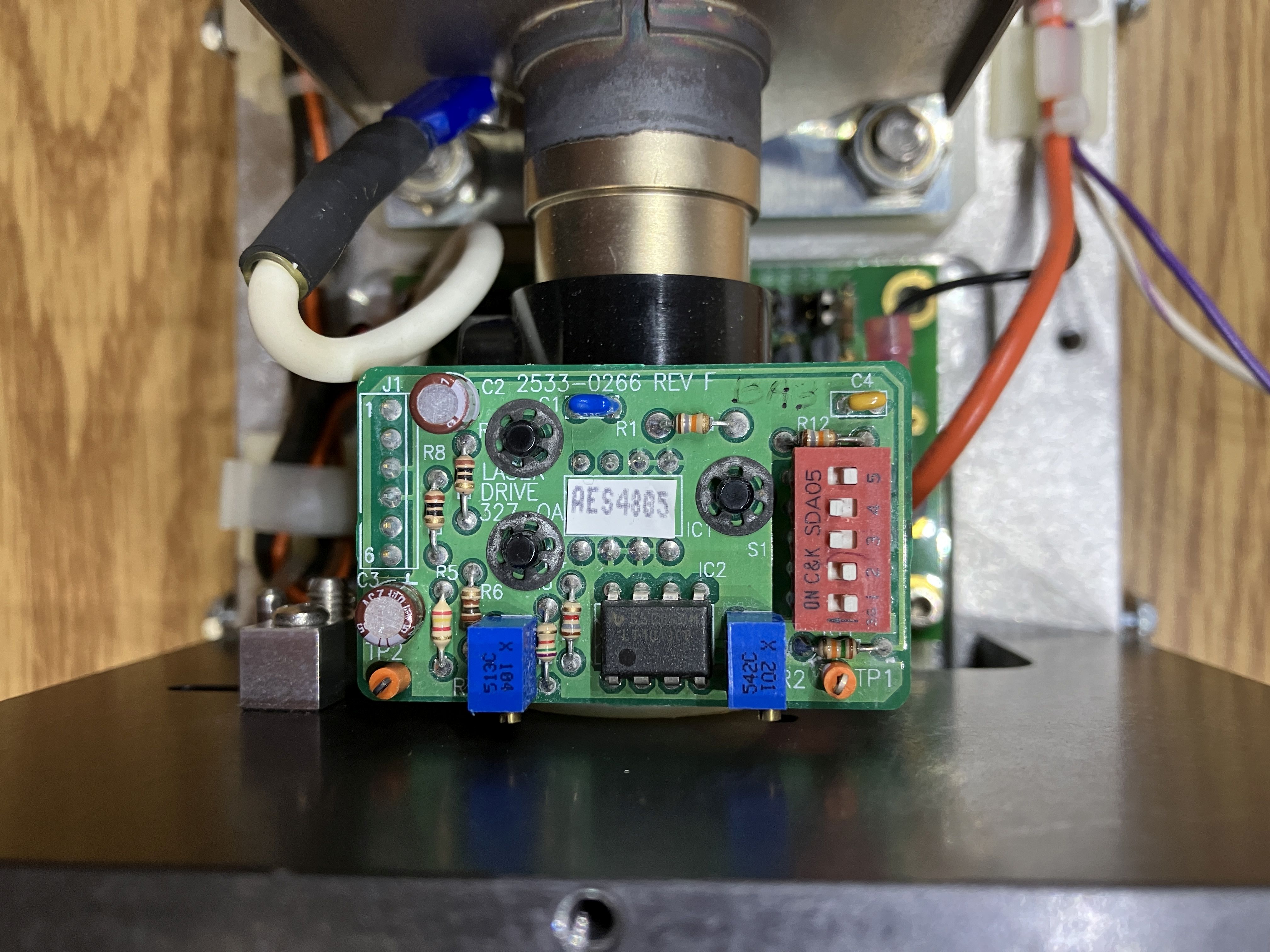
The power supply is significantly larger than the Melles Griot 300 series unit, and features a much larger fan. The benefit is that the fan in the Spectra-Physics 263C power supply is significantly quieter than the small, high-pitched fan in the Melles Griot 300 series power supply. This really all comes down to preference, as noise is often not a concern but power supply size can impact how the laser system is integrated into a final product. Additionally, all of the connectors on the Spectra-Physics power supply are the same type of proprietary, round, twist-lock connectors. For the laser head this is understandable as there is high voltage, high amperage, and a variety of control signals transmitted over that cable, but the AC input and remote interface could have been more standard connectors. The Melles Griot power supply has a standard 20 amp IEC connector for AC input and a DB25 for remote control. Upon disassembly, we learned that both power supplies are manufactured by Laser Drive Inc. The majority of laser power supplies from this era, including the ones used in commercial systems from Melles Griot and Spectra-Physics, are manufactured by Laser Drive Inc. and often re-branded. A link will be provided at the bottom of this page to Eaton's website as they have acquired Martek Power, who previously acquired Laser Drive Inc. Looking at Eaton's offerings for laser power supplies, you can see how they look exactly like older units from Laser Drive Inc.

Here is the pin-out for the 37 pin, round, twist-lock connector labeled "INTERFACE" on the 263C power supply.
| PIN | DESCRIPTION |
|---|---|
| 1 | REFERENCE RETURN (FOR PINS 10, 12, 15, 16) |
| 2 | REFERENCE INPUT (0-3V) |
| 3 | REFERENCE 3V SOURCE |
| 4 | SYSTEM GROUND |
| 5-9 | NOT CONNECTED |
| 10 |
REGULATION STATUS (LOW = REGULATED, HIGH = NOT REGULATED) |
| 11 |
+15V DC OUT (100 mA) |
| 12 |
INTERLOCK STATUS (LOW = INTERLOCK CLOSED, HIGH = INTERLOCK OPEN) |
| 13-14 |
NOT CONNECTED |
| 15 |
STANDBY MODE STATUS (LOW = STANDBY, HIGH = RUN) |
| 16 | LASER STATUS (LOW = LASER EMISSION, HIGH = NO LASER EMISSION) |
| 17-18 | NOT CONNECTED |
| 19 | +15V DC OUT (100 mA) |
| 20 | -15V DC OUT (100 mA) |
| 21 | +/-15V DC RETURN |
| 22-25 | NOT CONNECTED |
| 26 | TUBE CURRENT MONITOR (0.1 V / A) |
| 27 | TUBE CURRENT MONITOR RETURN |
| 28 | NOT CONNECTED |
| 29 | OUTPUT POWER MONITOR (0.2 V / mW) |
| 30 | OUTPUT POWER MONITOR RETURN |
| 31-33 | NOT CONNECTED |
| 34 | STANDBY MODE SOURCE (SHORT TO PIN 35 FOR STANDBY MODE) |
| 35 |
STANDBY MODE RETURN |
| 36 | INTERLOCK SOURCE (SHORT TO PIN 37 TO ENABLE LASER) |
| 37 | INTERLOCK RETURN |
Below are some pictures of the inside of the 236C power supply. The boards are branded Laser Drive Inc. The power supply is extremely well built, appears to have adequate ventilation, and uses high quality components.

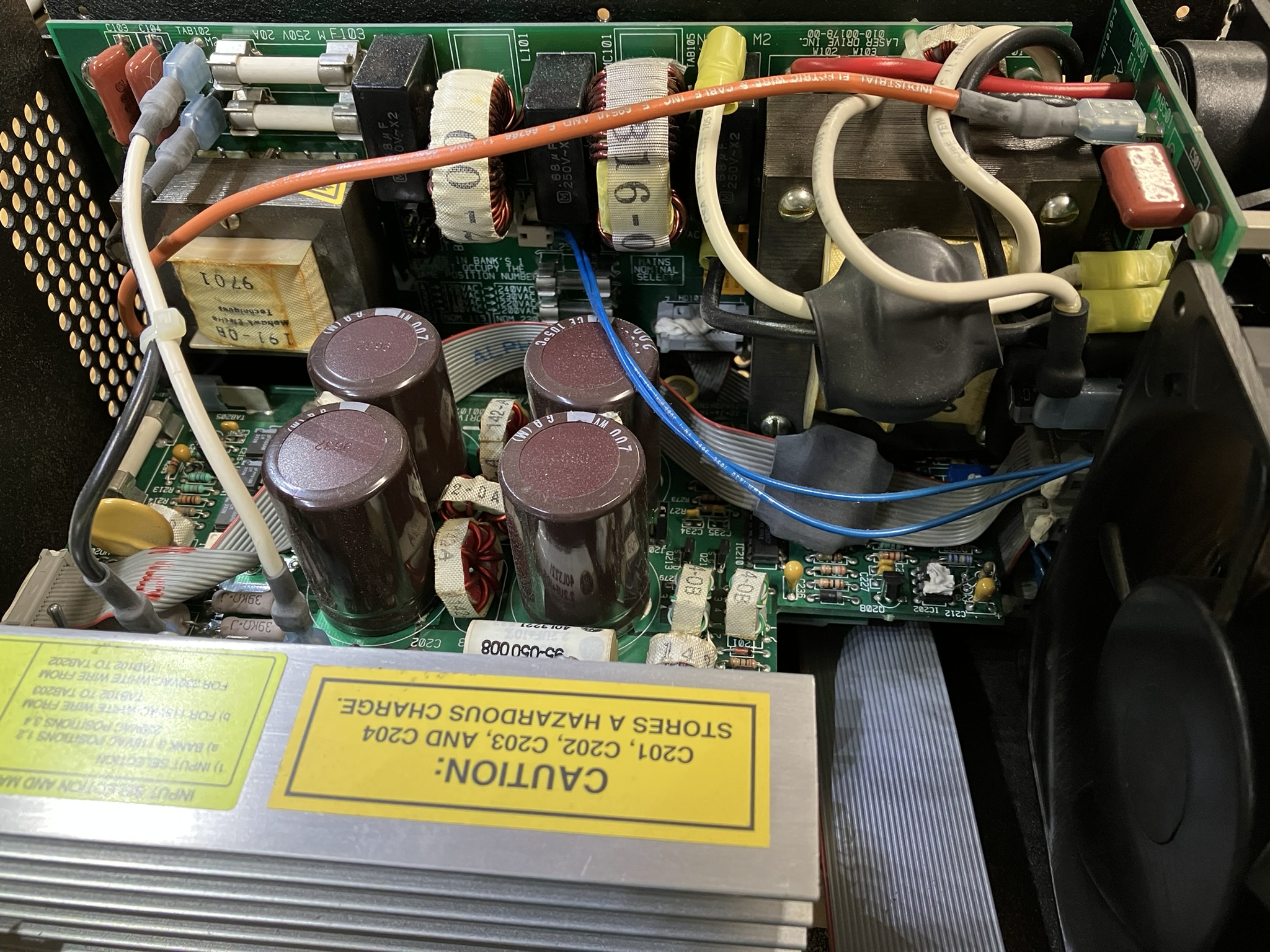
The original Spectra-Physics 361C remote control unit was included with this laser system. Therefore, we did not need to build a custom controller. It's a very simple controller with an analog meter which can display output power in mW and tube current in amps. It has an interlock key-switch and some toggle switches to change the meter display and switch the laser into standby mode. The output can be adjusted using a small potentiometer on the controller.
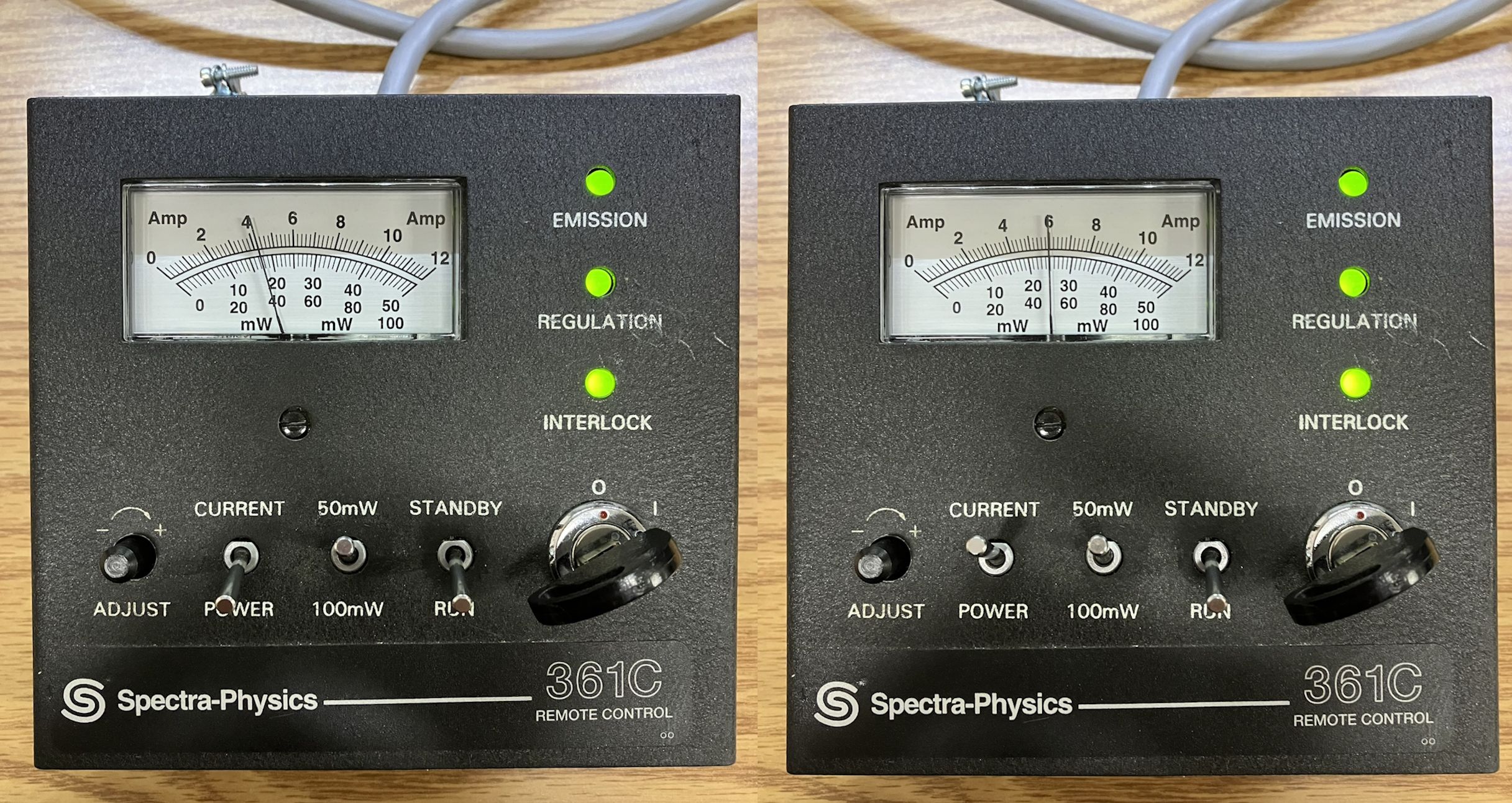
Here is a picture of the inside of the 361C controller. Take note of the several potentiometers. It seems like this controller is calibrated separately from the power supply, but we cannot fully confirm this.

Powering the laser system is quite simple, the only complexity being the requirement for 20 amps of AC power at 115v. Like other air-cooled Argon Ion lasers of this size and power, they generally draw around 5-10 amps while running normally. The 20 amp requirement comes from the large inrush current required to strike the tube and get it running. A healthy system will only need high amperage for the second it takes to strike the tube and then it drops down to the lower running amperage. During the initial testing of the Melles Griot unit, we observed sustained current draw ranging from 12-16 amps while the power supply repeatedly tried to strike the tube and start the laser. Once we ran the 4-hour burn-in of that laser system, it now starts reliably and does not draw excessive current. The Spectra-Physics system is in such good health that it never takes convincing or excessive current to start. It strikes and gets running so quickly that our current meter never even registers the high amperage spike. At ~18 mW of output power, the tube current typically hovers around 6 amps, and the AC input current is also around 6 amps.
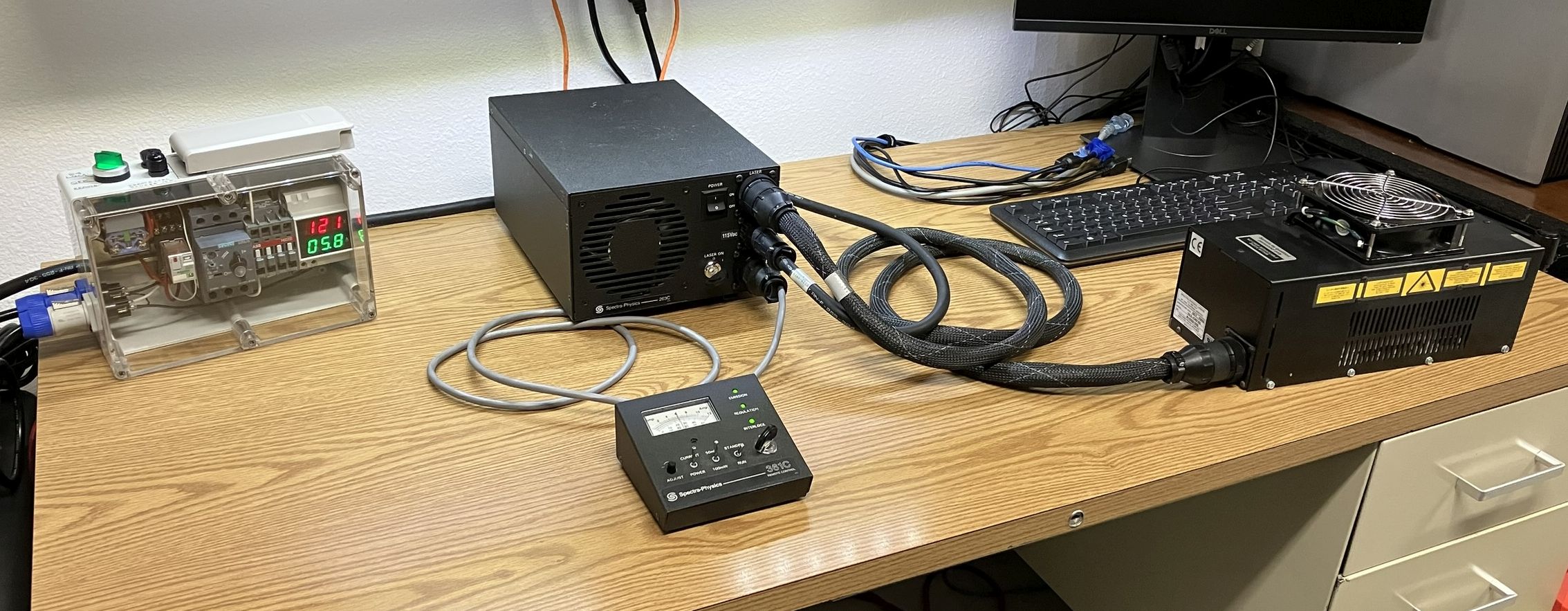
We are very pleased with this laser system and appreciative of the previous owner who clearly kept it clean and took care of it. All of the connectors are in excellent shape and very easy to connect and disconnect. As stated earlier, the system operates very well and without issues given its age. It was likely kept in a lab or institution and only operated within its specifications and likely not for extended periods of time. There is a CURTIS 520-LNA electro-chemical elapsed time indicator (hour counter) within the laser head. Unfortunately, we were unable to get a clear reading from the hour counter as it is likely maxed out. Additionally, since this is a rarer green variant Argon Ion laser system, we are mostly unsure of the original intended purpose, although based on some quick research, fluorescence microscopy is likely one use case aside from typical lab and educational use.
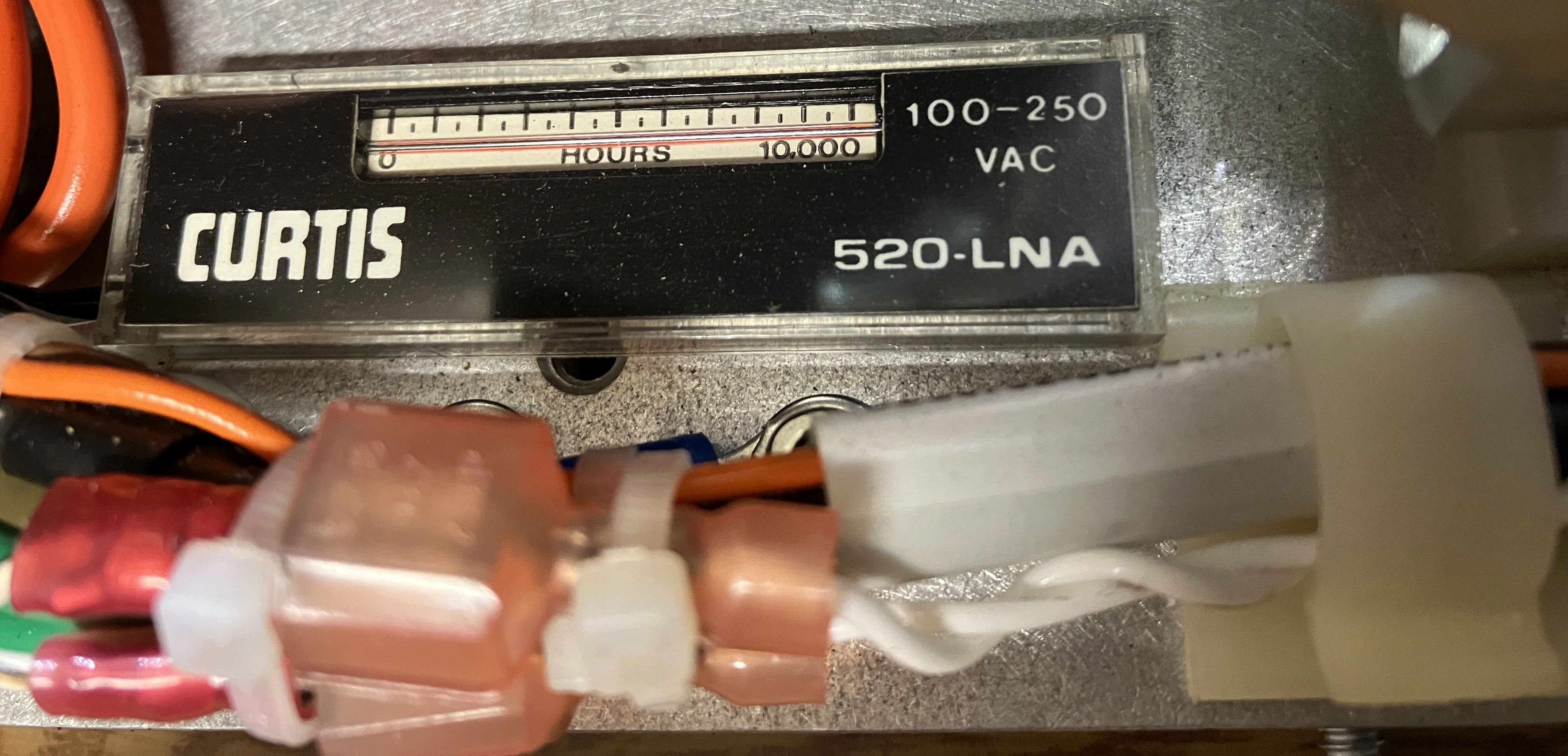
Below are some useful links to what little documentation is available for this laser system, modern power supplies, and useful sources for laser information including Zenodilodon on YouTube and Sam's Laser FAQ!